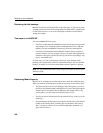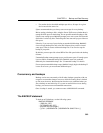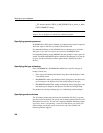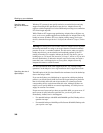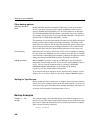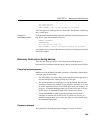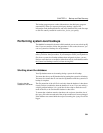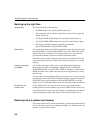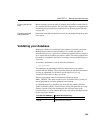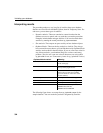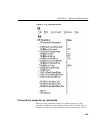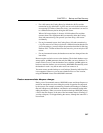
Backing up your database
390
• If backup fails during either the checkpoint at the start of backup or the
checkpoint when backup is complete, it performs normal checkpoint
recovery.
• If backup fails between checkpoints, it rolls back the backup.
• If the system fails at any time between the initial and final checkpoint and
you must restore the database, you must do so using an older set of backup
tapes or disk files.
• If the system fails during the final checkpoint after a
FULL backup, you can
restore from the backup tapes or files you have just created.
After you complete a backup
In the event that you ever need to move a database or one of its dbspaces, you
need to know the name of every dbspace in the database when the backup was
made. See “Recording dbspace names” for details on how to record this
information after you complete a backup.
Performing backups with non-Sybase products
Adaptive Server IQ supports backup and restore using a number of third-party
products. The package you use must conform to the Adaptive Server Enterprise
Backup Interface. Check the documentation for your product to be sure that it
supports Sybase databases.
To perform such a backup or restore, you issue the
BACKUP or RESTORE
statement as if you were using Adaptive Server IQ to perform the operation,
with the following exceptions:
• For each archive_device, instead of specifying the actual device name,
specify a string in the following format:
dll_name
::
vendor_specific_information
• Do not specify the STACKER or SIZE parameters.
The dll_name corresponds to a Dynamic Link Library loaded at run time. It can
be from 1 to 30 bytes long, and can contain only alphanumeric and underscore
characters. The dll_name must be the same for each archive_device.
The content of vendor_specific_information varies by product, and can differ
for each archive_device. The total string (including dll_name:: and vendor
information) can be up to 255 bytes long.



